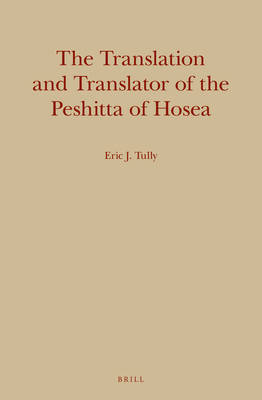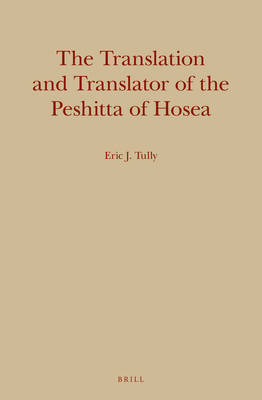
- Afhalen na 1 uur in een winkel met voorraad
- Gratis thuislevering in België vanaf € 30
- Ruim aanbod met 7 miljoen producten
- Afhalen na 1 uur in een winkel met voorraad
- Gratis thuislevering in België vanaf € 30
- Ruim aanbod met 7 miljoen producten
Zoeken
Omschrijving
In The Translation and the Translator of the Peshitta of Hosea, Eric J. Tully offers the first study of the Peshitta conducted via insights and methods from the discipline of Translation Studies. Every translator leaves residue of his or her interference in the course of the translation process. This investigation analyzes that interference (seen in the form of translation shifts), categorizes it, and draws conclusions with implications for textual criticism, Translation Studies, historical reconstruction, and the history of interpretation. Eric Tully argues that the Peshitta was translated from a Hebrew text similar to the Masoretic Text (but not identical to it) and was also influenced by readings from the Greek Septuagint. The study concludes with a socio-historical profile of the translator. Just as an ancient person makes one kind of ceramic jug or bronze incense stand and not another, the translation is a literary artifact in which the translator has crafted a text that reflects his or her own values and technique.
Specificaties
Betrokkenen
- Auteur(s):
- Uitgeverij:
Inhoud
- Aantal bladzijden:
- 380
- Taal:
- Engels
- Reeks:
- Reeksnummer:
- nr. 21
Eigenschappen
- Productcode (EAN):
- 9789004288300
- Verschijningsdatum:
- 5/02/2015
- Uitvoering:
- Hardcover
- Formaat:
- Genaaid
- Afmetingen:
- 155 mm x 235 mm
- Gewicht:
- 707 g

Alleen bij Standaard Boekhandel
+ 528 punten op je klantenkaart van Standaard Boekhandel
Beoordelingen
We publiceren alleen reviews die voldoen aan de voorwaarden voor reviews. Bekijk onze voorwaarden voor reviews.








